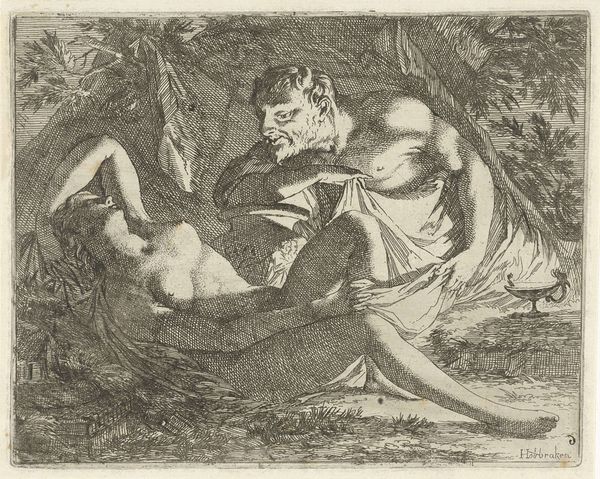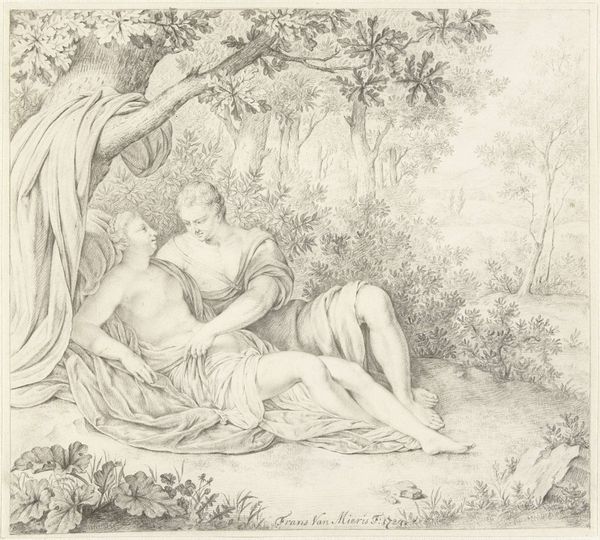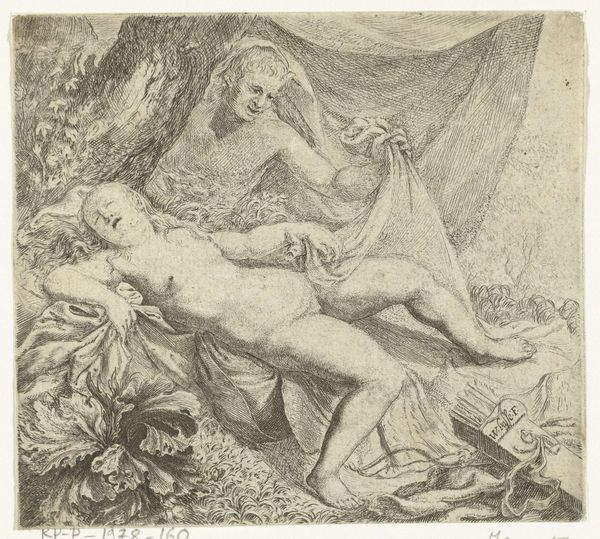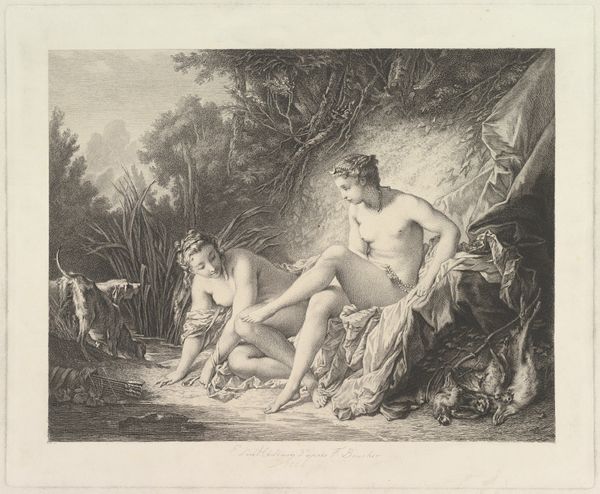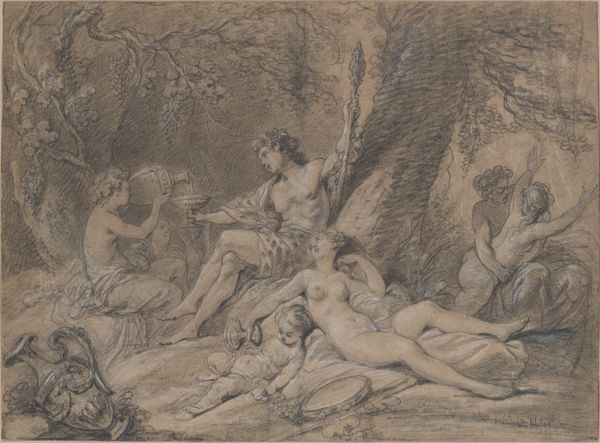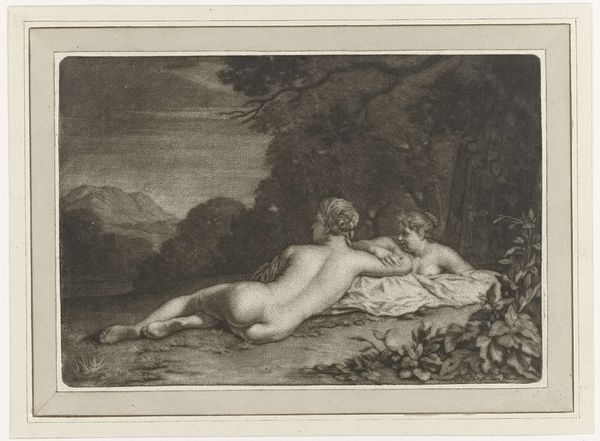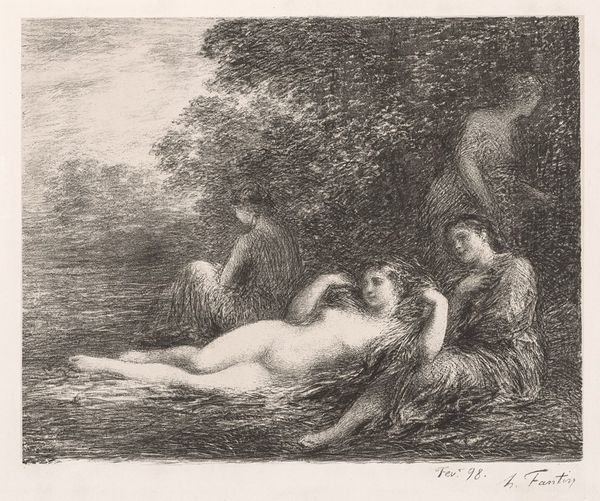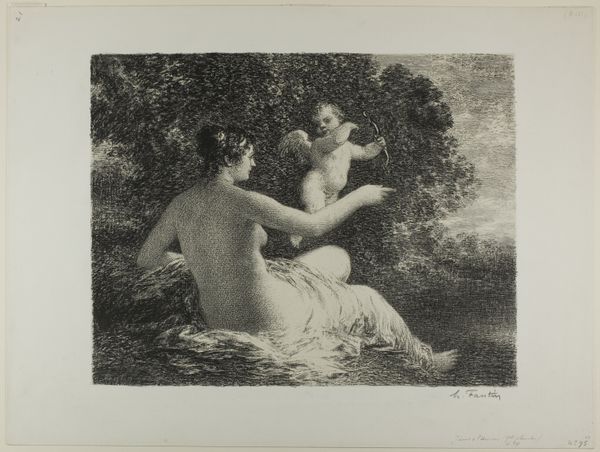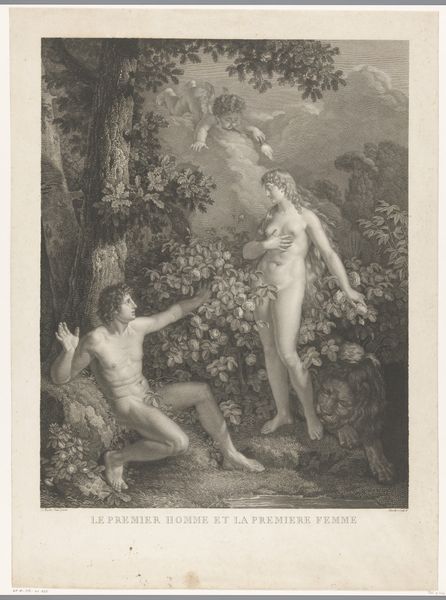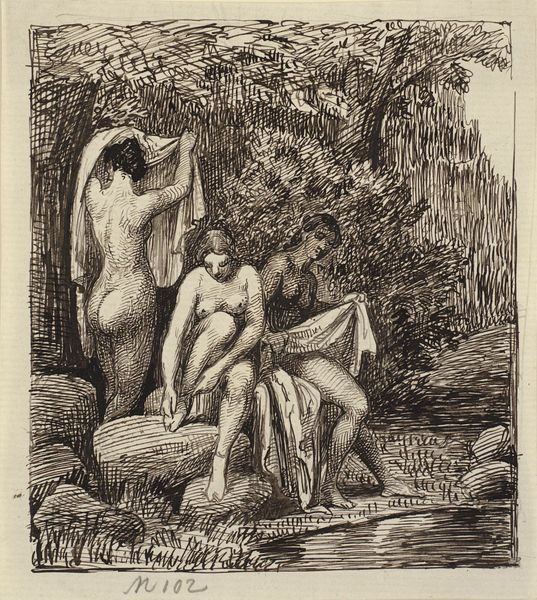
engraving
#
baroque
#
figuration
#
mythology
#
history-painting
#
nude
#
engraving
Dimensions: height 166 mm, width 212 mm
Copyright: Rijks Museum: Open Domain
Curator: This engraving, created sometime between 1600 and 1647 by Moyses van Wtenbrouck, is titled "Salamacis en Hermaphroditus." Editor: The density of the cross-hatching really jumps out—it gives the whole scene an almost claustrophobic, tangled feeling, even though it depicts an outdoor scene. Curator: Indeed, van Wtenbrouck's use of engraving beautifully renders the textures of the lush forest surrounding the figures. Note how that darkness almost seems to encroach upon the figures themselves. Symbolically, that speaks to the dangers inherent in abandoning oneself to the intoxicating, chaotic forces of nature, forces all but embodied by Salamacis in this narrative. Editor: Yes, the legend of Hermaphroditus is essentially about challenging fixed identities, right? It’s easy to see Salamacis as a symbol for the suffocating, transformative power of unwanted attention and the loss of individual agency when someone tries to define you. Curator: The tale does act as a potent visual metaphor. Van Wtenbrouck really captures the intensity of the Ovidian source material, illustrating the moment when Salamacis fervently begs the gods to fuse her with Hermaphroditus, creating one being from two. Look closely, and you'll observe how her expression teeters between desperation and triumphant glee. Editor: I can almost feel Hermaphroditus's reluctance radiating off the engraving! The myth reflects very real anxieties about the loss of bodily autonomy. Considering its presence throughout art history, from ancient sculptures to baroque engravings like this one, I find it interesting how consistent that fear of forced fusion remains. Curator: And perhaps that is because the symbols are enduring. Remember, water itself is a potent symbol. The way it reflects yet also distorts one's image represents an interesting dichotomy for someone resisting a fundamental transformation of self. Van Wtenbrouck's detailed depictions grant viewers plenty to ponder. Editor: Definitely, viewing this with modern lenses allows a recognition of deep, resonant messages concerning identity and transformation. It's like holding a historical mirror reflecting back on contemporary concerns. Curator: Agreed, revisiting these myths invites reflection on their continued cultural weight.
Comments
No comments
Be the first to comment and join the conversation on the ultimate creative platform.
